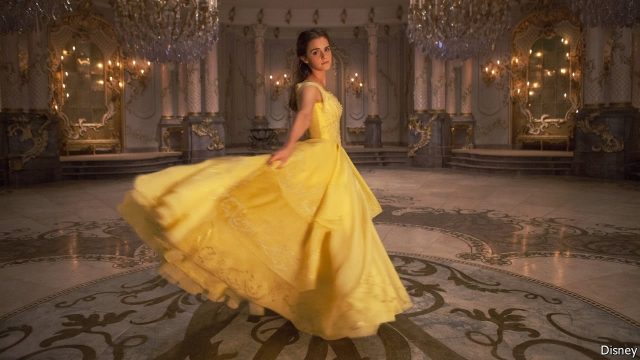There have been less formal efforts to evaluate films, based on different criteria. To pass the Bechdel test - shorthand for "whether a film is woman-friendly" - a film need only feature two female characters who talk to each other about something other than men. The Internet Movie Database created a site for parents to submit descriptions of films in order to draw attention to scenes that may be unsuitable for children. And Movieguide assesses films based on "biblical principles". "All Saints" (2017), a story of a salesman-turned-pastor, comes highly recommended, while "3 Generations" (2015), a movie about a teenager transitioning from female to male, was "abhorrent" for its "homosexual, leftist worldview".
Common Sense Media (CSM), a non-profit organisation based in San Francisco, has been reviewing films and television shows since 2003, with the intention of informing parents about the media their children might consume. It provides the minimum age each film or series is suitable for, along with a five-point rating system indicating the amount of sex, violence, sweary language, binge-drinking or drug-taking featured. After urging from its users, CSM announced in June that they would be developing the system further - to account for representations of gender. CSM argued that parents "want help choosing content that better reflects the world we live in today", and cited research indicating that negative gender representations on screen "can affect children's sense of self, relationships and career aspirations".
Comment: How horrible. Seeing women might just turn your daughter into a woman!
In theory, the system is quite simple: a film will be awarded the organisation's seal of approval if it presents characters that defy gender stereotypes. Films designed for early childhood (between the ages of two and six) should depict boys and girls as friends and equals. By the time of early adolescence (between 11 and 13), films must demonstrate that worth is based on more than just physical beauty. In foregrounding the lazy depictions of men and women on television and in films, the move is being hailed by some as a breakthrough. Geena Davis, an actor and the founder of an organisation dedicated to addressing gender imbalances in the media, told the New York Times that the CSM system increases accountability: "people making these products are sure they're gender-balanced when they're profoundly not."
Comment: And obviously we need an ideological censor to make sure they do.
The system is still in its infancy, but CSM has chosen dozens of films and television shows that offer progressive depictions of gender roles. "Moonlight" gets the thumbs-up for its portrayal of being young, black and gay in America. "Mulan" (1998) makes the list thanks to its "strong female character" that fights the Huns. "Bend it Like Beckham" (2003), a romantic comedy, is also praised for its determined, ambitious, football-loving protagonist, Jess.
But some might argue that these are not unequivocally progressive characters. Mulan can only join the Chinese army by posing as a man - men are, it is repeated, superior to women - and when she is offered a high-ranking job, she turns it down in order to return to the homestead. Jess, too, is an unusual female lead, but one could argue that she relies heavily on the film's male football coach for guidance and encouragement. These examples rather illustrate the problem: "gender-positive" is hardly a neutral concept.
Comment: Precisely. The only way to be ideologically pure is to present boys who identify as girls, and girls who identify as boys. Oh, and to make sure not to depict anything resembling how gender actually manifests in the world, otherwise known as reality. Society must be presented as an overbearing matriarchy, with effeminate men who stay at home to raise children. Women must make up the vast majority of the casts for all war films, and take the roles of the majority of criminals and rapists. The only way for this to work is to be rigorously consistent.
CSM is aware that the ratings process will not be simple. Betsy Bozdech, the executive editor, says she has already enjoyed a taste of the lively debates that are on the horizon. A recent internal discussion revolved around whether the recent "Beauty and the Beast" film, starring Emma Watson, should be considered a force for good. Some pointed to its strong female lead; others made a case for her suffering from Stockholm syndrome. Ms Watson said that she had helped to make feminist adjustments to the character of Belle, but for some viewers the coercive overtones of her relationship with the Beast remained problematic.
Turning a multifaceted issue into a simple rating is sure to be riddled with difficulties. Not only does "positive gender representation" have a multitude of interpretations; any well-made film has layered characters and plots. Sometimes they may contradict or complicate the picture. Indeed, just as violence and sex can be part of great art, so can a story be a worthy one even if it has traditional gender roles; exploring those roles can be a way to challenge them. So although the research showcased by CSM is worthwhile, reducing it to a binary rating is not. The creators would do well to allow the classification to be as nuanced as the art form.




Comment: Warning to CSM: with the SJWs on your back, you will never succeed at this, no matter how hard you try.